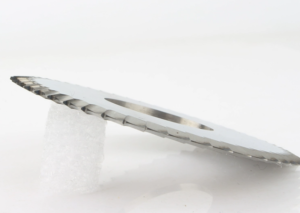Table of Contents
ToggleCarbide Blade Cuts Metal
In the world of metalworking, the tools we choose can significantly impact the outcome of our projects. One of the most reliable and efficient tools available is the carbide blade. Known for its durability and precision, a carbide blade cut metal is a preferred choice among professionals and DIY enthusiasts alike. This article will explore how these blades function, the benefits they offer, and tips for their optimal performance, helping you make an informed decision when considering a carbide blade cut metal for your tasks.
Understanding the Carbide Blade
At its core, a carbide blade is made from a compound of carbon and tungsten. This combination results in a material that is exceedingly hard and wear-resistant. In comparison to traditional steel blades, carbide blades provide enhanced cutting performance and a much longer lifespan. When using a carbide blade to cut metal, it penetrates cleanly through surfaces, creating smooth and precise cuts.
For instance, consider a scenario where a fabricator needs to process thick sheet metal. A carbide blade cut metal in such a case would not only slice through the material with accurate dimensions but also minimize the occurrence of burrs and rough edges. This attribute is particularly appreciated in industries where precision is vital, such as aerospace or automotive manufacturing.
Benefits of Using a Carbide Blade
When evaluating the need for a carbide blade cut metal, several key benefits stand out:
1. Longevity: Carbide blades can outlast their steel counterparts by several times, meaning fewer replacements and reduced costs in the long run. For example, a machine shop that frequently uses metal saws might find itself replacing steel blades weekly, while a carbide blade can last several months, depending on usage.
2. Speed and Efficiency: Cutting metal with a carbide blade can significantly streamline the workflow. Carbide blades maintain their sharpness longer, allowing for faster cuts without frequent interruptions for resharpening. This efficiency becomes increasingly important in high-volume production environments.
3. Versatility: Carbide blades can tackle various materials, including different types of metals, wood, and composites. This versatility makes them suitable for various applications, from construction to detailed craftsman work.
4. Clean Cuts: One of the standout features of a carbide blade cut metal is its ability to produce clean, precise slices. This reduces the need for additional finishing work, saving time and enhancing the final product’s appearance.
5. Reduced Risk of Breakage: The toughness of carbide means that blades are less prone to chipping or breaking during operation, which can be a common issue with lower-quality steel blades.
Key Applications for Carbide Blades
When investing in a carbide blade cut metal, understanding its applications is crucial. Here are some common areas where these blades excel:
1. Metal Fabrication: In the realm of metal fabrication, precision is paramount. Companies focusing on custom metal work often rely on carbide blades to cut shapes and features with tight tolerances. The clean edges help minimize costly rework.
2. Automotive Industry: The automotive sector frequently uses carbide blades to cut steel components, ensuring they meet the stringent specifications for safety and performance. For instance, a manufacturer might use carbide blades for cutting frame rails, which must be both strong and precisely contoured.
3. Construction: For contractors working with metal studs, conduit, or roofing materials, a carbide blade cut metal can provide the reliable performance needed for heavy-duty applications. The longevity and efficiency of these blades contribute to keeping projects on schedule.
4. Art and Craft: Beyond industrial applications, artisans crafting metal sculptures or intricate designs can benefit greatly from the precision offered by carbide blades. For example, a sculptor might use a carbide blade to achieve fine details in a piece, leading to a polished final product that showcases their craftsmanship.
Tips for Optimal Performance
To maximize the effectiveness of a carbide blade cut metal, a few best practices should be kept in mind:
1. Choose the Right Blade for the Job: Not all carbide blades are created equal. Select blades designed specifically for the material you’re cutting, whether it’s stainless steel, aluminum, or other metal types. Each material may require a blade with specific tooth design and geometry.
2. Proper Maintenance: Even the best carbide blades require maintenance. Keep blades clean and free of debris. Regularly check for any visible damage or wear and replace them when necessary to maintain optimal performance.
3. Use Adequate Speed and Feed Rates: When using a carbide blade cut metal, adhere to the recommended speed and feed rates for the specific material. Operating outside of these parameters can lead to subpar cuts and premature blade wear.
4. Cooling Solutions: In high-intensity cutting applications, consider using lubricants or cutting fluids to reduce heat buildup. Excessive heat can dull the blade faster and impact cutting performance.
5. Wear Personal Protective Equipment (PPE): Always prioritize safety. When cutting metal, ensure that you are wearing appropriate PPE, such as gloves and safety goggles, to protect against metal shavings and other debris.
Conclusion
The versatility and efficiency of a carbide blade cut metal make it an invaluable tool in various industries and crafts. By understanding the benefits, applications, and techniques for optimal use, you can ensure you get the most out of your investment. Whether you are involved in heavy-duty industrial work or intricate artistic creations, a carbide blade is likely to elevate your metal-cutting tasks to a new level of performance. Ultimately, investing in a high-quality carbide blade will prove beneficial, ensuring smooth cuts and precision in every projec
